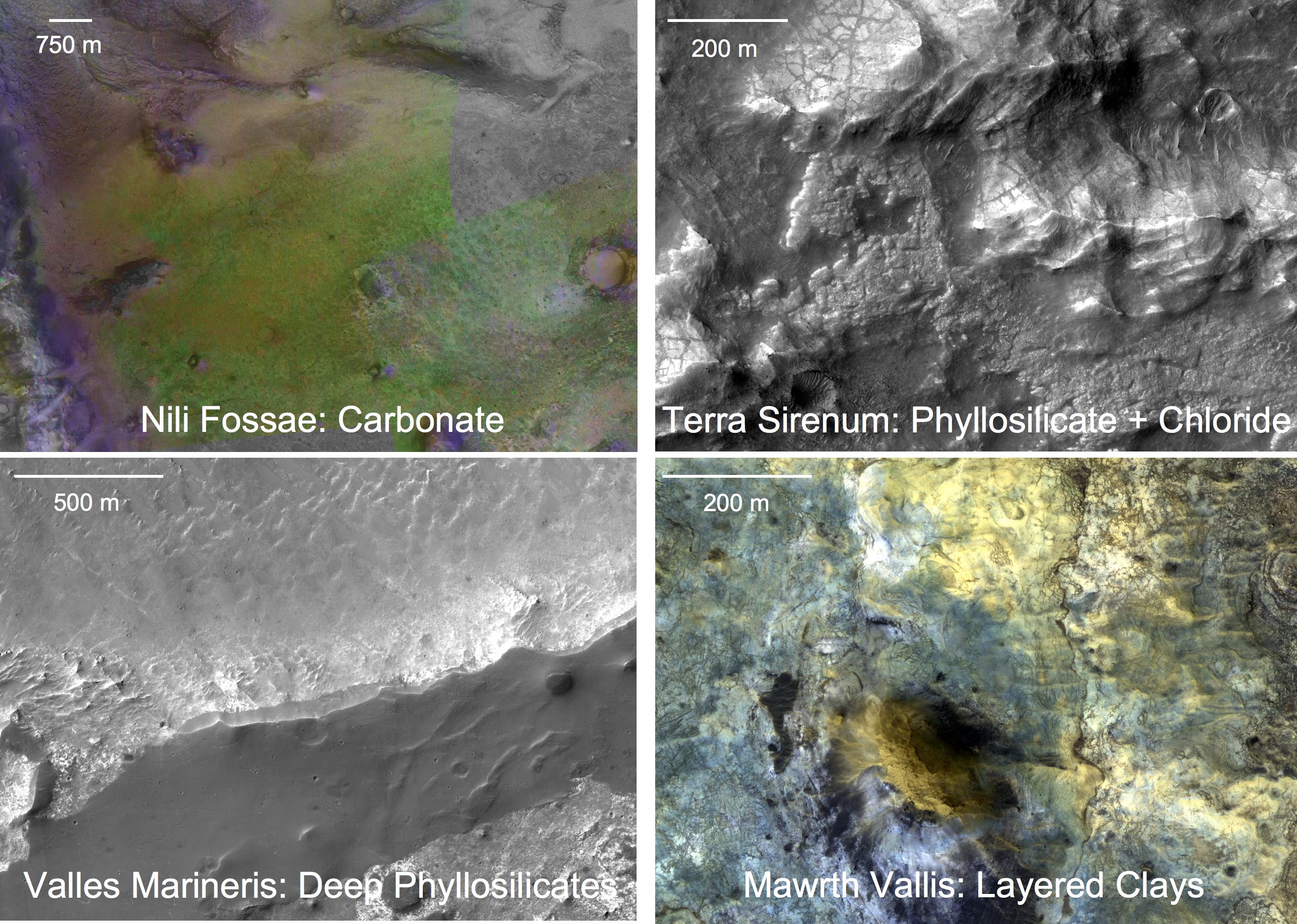|
Noachian
The Noachian is a geologic system and early time period on the planet Mars characterized by high rates of meteorite and asteroid impacts and the possible presence of abundant surface water. The absolute age of the Noachian period is uncertain but probably corresponds to the lunar Pre-Nectarian to Early Imbrian periods of 4100 to 3700 million years ago, during the interval known as the Late Heavy Bombardment. Many of the large impact basins on the Moon and Mars formed at this time. The Noachian Period is roughly equivalent to the Earth's Hadean and early Archean eons when the first life forms likely arose. Noachian-aged terrains on Mars are prime spacecraft landing sites to search for fossil evidence of life. During the Noachian, the atmosphere of Mars was denser than it is today, and the climate possibly warm enough to allow rainfall. Large lakes and rivers were present in the southern hemisphere, and an ocean may have covered the low-lying northern plains. Extensive volc ... [...More Info...] [...Related Items...] OR: [Wikipedia] [Google] [Baidu] |
Tharsis Bulge
Tharsis () is a vast volcanic plateau centered near the equator in the western hemisphere of Mars. The region is home to the largest volcanoes in the Solar System, including the three enormous shield volcanoes Arsia Mons, Pavonis Mons, and Ascraeus Mons, which are collectively known as the Tharsis Montes. The tallest volcano on the planet, Olympus Mons, is often associated with the Tharsis region but is actually located off the western edge of the plateau. The name Tharsis is the Greco-Latin transliteration of the biblical Tarshish, the land at the western extremity of the known world. Location and size Tharsis can have many meanings depending on historical and scientific context. The name is commonly used in a broad sense to represent a continent-sized region of anomalously elevated terrain centered just south of the equator around longitude 265°E.Carr, M.H. (2006). ''The Surface of Mars;'' Cambridge University Press: Cambridge, UK, p. 46. . Called the Tharsis bulge or Th ... [...More Info...] [...Related Items...] OR: [Wikipedia] [Google] [Baidu] |

